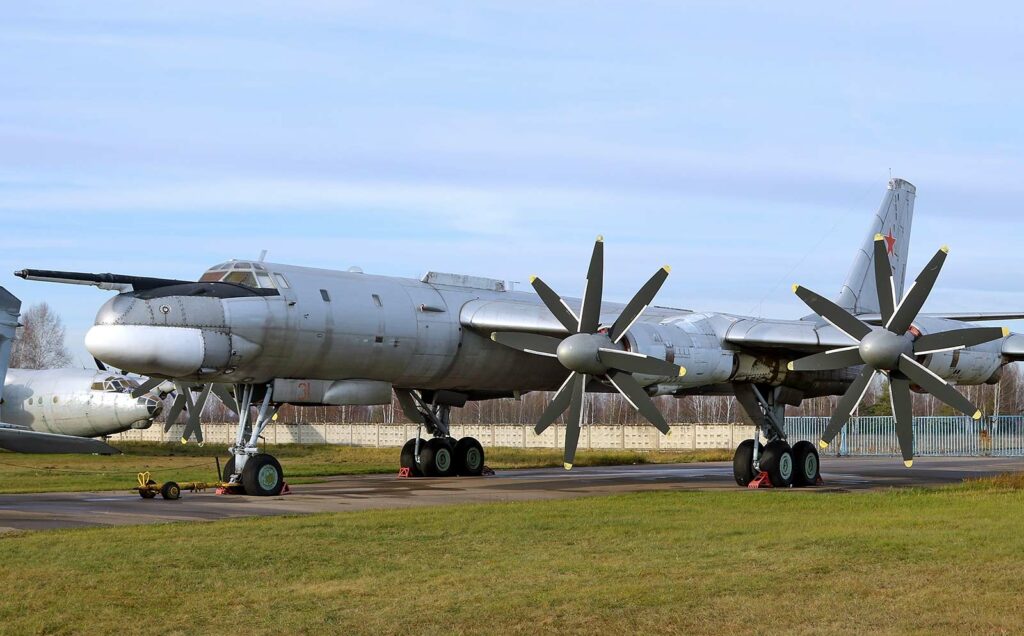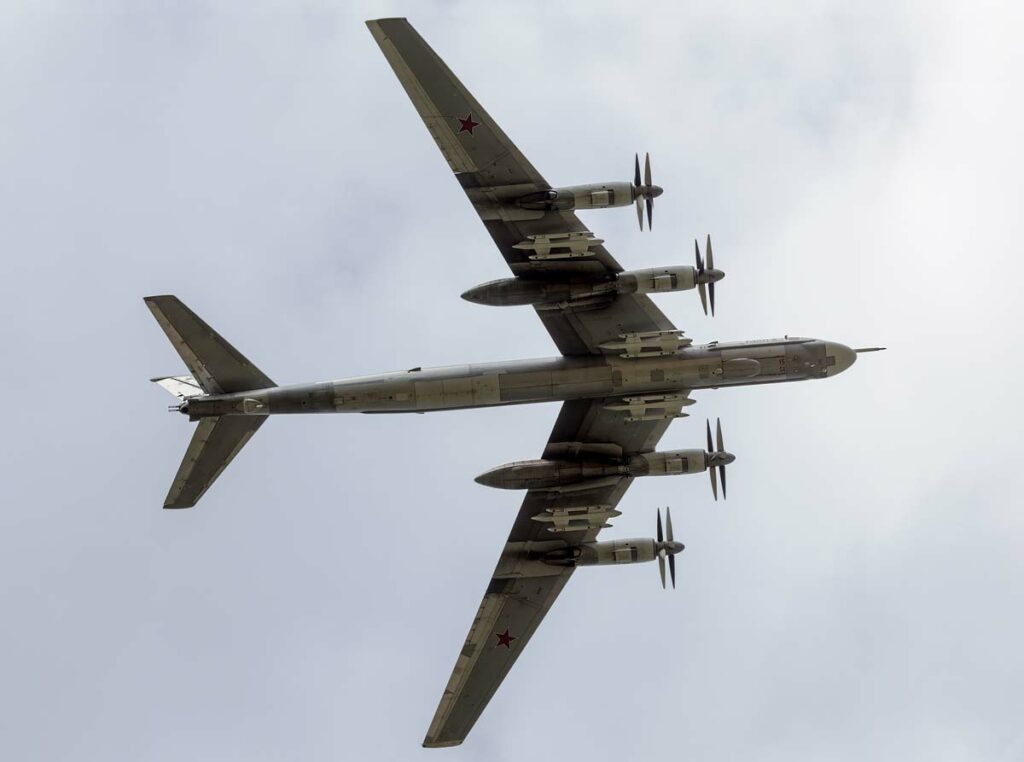The Tupolev Tu-95 (NATO codename: Bear) is a Soviet long-range strategic bomber and missile platform, notable for its swept-back wings and turboprop engines.
In Brief
The Tupolev Tu-95, known as “Bear” in NATO terminology, is a long-range strategic bomber developed by the Soviet Union. First flown in 1952, it features four Kuznetsov NK-12 turboprop engines driving contra-rotating propellers. With a length of 53.07 meters, a wingspan of 50.04 meters, and a maximum takeoff weight of 185,000 kilograms, the Tu-95 has a range of 12,000 km (7,456 miles) and a maximum speed of 855 kph (531 mph). Its armament includes up to 20,000 lb of stores, anti-ship missiles, and precision-guided munitions, in addition to one or two 23 mm AM-23 cannons in a radar-controlled tail unit.
The Tupolev Tu-95 Bear stands as one of the most iconic strategic bombers of the Cold War era, serving as a key component of the Soviet Union’s long-range nuclear strike capabilities.

History of Development
In the early 1950s, the Soviet Union sought to develop a new strategic bomber capable of threatening targets in the United States. The Tu-95 was designed to meet this requirement, with a request for an aircraft that could carry a significant payload over a range of 5,000 miles without refueling. Tupolev’s design, featuring turboprop engines for increased power and efficiency, was officially approved on July 11, 1951. The first prototype, Tu-95/I, took its maiden flight in November 1952, but it crashed during testing. The second prototype, Tu-95/II, featuring more reliable NK-12 engines, was successful, leading to mass production beginning in January 1956.
Design
The Tu-95 featured a swept-wing design with a 35-degree angle to accommodate the large bomb bay. Its distinctive feature was the use of four Kuznetsov turboprops, each with contra-rotating propellers, providing a unique combination of speed and range. Designed by a German team of engineers, the engines were advanced for their time. The bomber’s large size allowed it to carry a substantial payload, and its design evolved over time to accommodate various roles, including maritime reconnaissance and cruise missile deployment.
Performance
With a top speed of 855 kph and a range of 12,000 km, the Tu-95 was capable of reaching any point in the Northern Hemisphere without refueling. Its loudness, due to the propeller tips breaking the sound barrier, was a notable characteristic. The aircraft’s performance was continually updated, with modernizations extending its operational life.
Variants
Key variants of the Tu-95 include:
- Tu-142: Maritime patrol and anti-submarine warfare variant.
- Tu-114: Airliner variant and the fastest propeller-driven aircraft developed.
- Tu-95MS: Modernized missile carrier with upgrades in engines, radar, and weaponry.
- Tu-95MSM: Further modernization with new systems and missile capabilities.

Military Use and Combat
The Tu-95 entered service in 1956 and has been used in various roles, including strategic bombing, reconnaissance, and maritime patrol. It played a crucial role in the Soviet Union’s nuclear deterrence strategy during the Cold War. The bomber participated in the testing of the Tsar Bomba, the most powerful thermonuclear bomb ever detonated. Despite the end of the Cold War, the Tu-95 continues to serve in the Russian Aerospace Forces, with modernizations ensuring its relevance.
The Tupolev Tu-95 Bear is a testament to the ingenuity and durability of Soviet aircraft design. Its unique combination of range, payload capacity, and speed, along with continuous modernizations, has allowed it to remain a relevant and formidable strategic bomber well into the 21st century. Its role in the Cold War and continued service in the Russian Aerospace Forces mark the Tu-95 as a significant aircraft in the history of military aviation.
Back to the Bombers section.